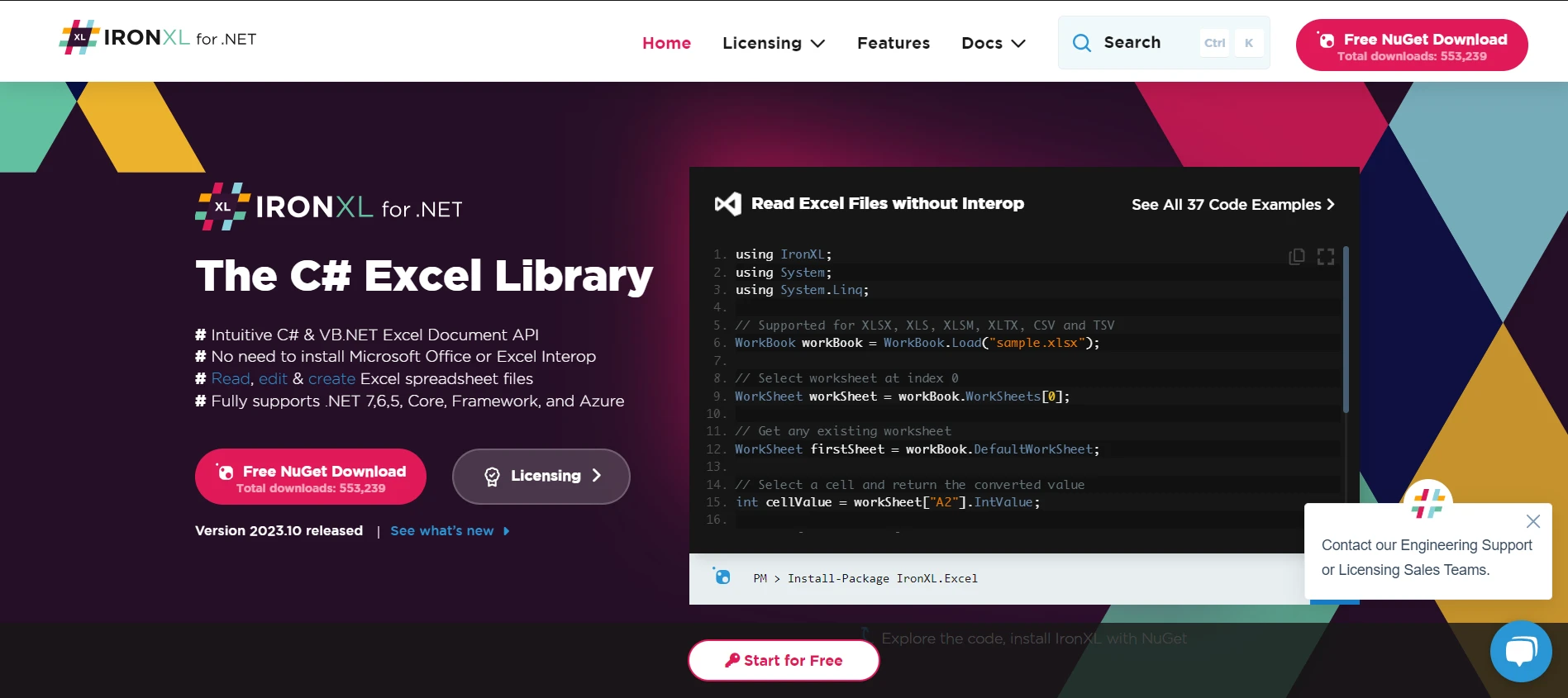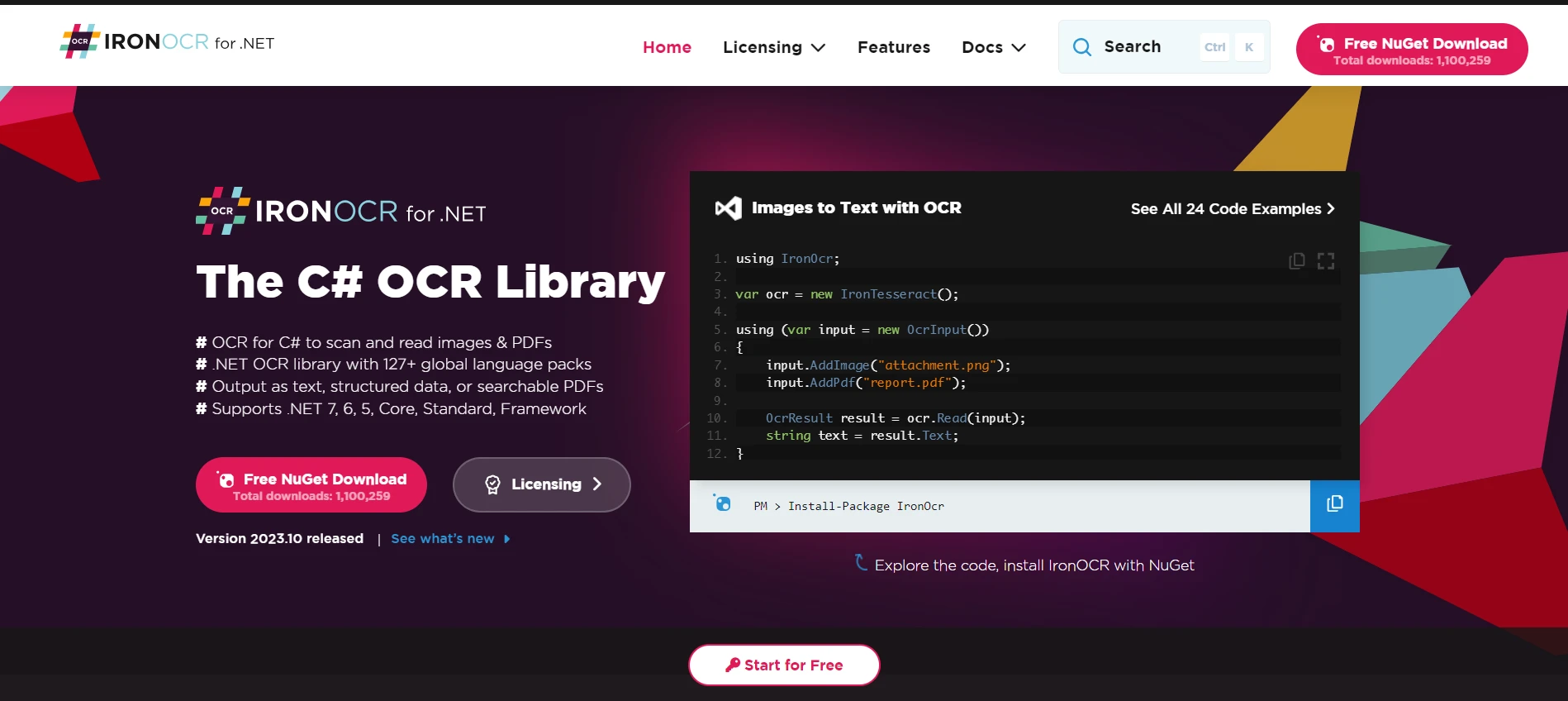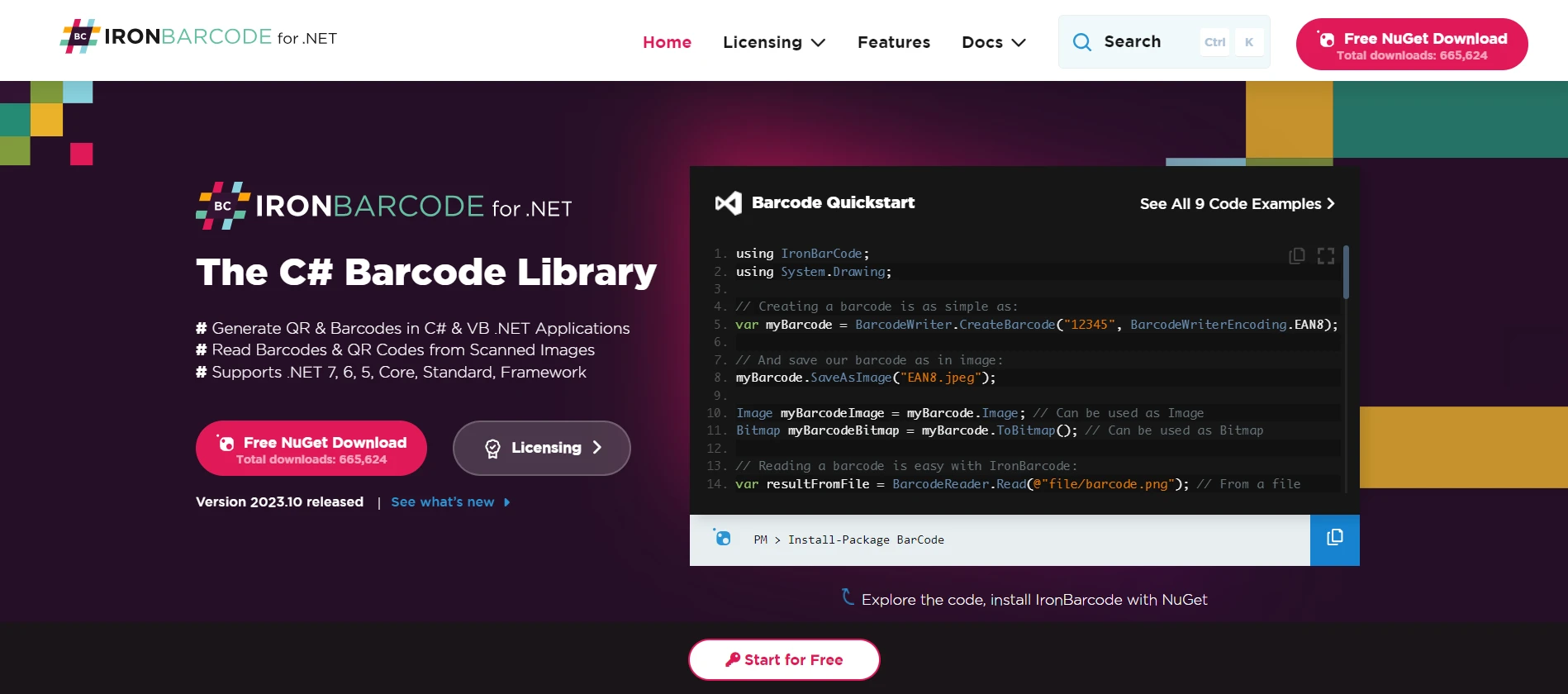Test in a live environment
Test in production without watermarks.
Works wherever you need it to.
Creating a web app is a popular task for many developers. This article will introduce you to how to build a web application using C# and some of the leading tools and frameworks, such as Visual Studio and ASP.NET Core.
As we explore how you can use C# to create any web application that you may need, we will also be exploring how to best use ASP.NET Core throughout the development process, along with the potential of implementing powerful tools such as IronXL, IronOCR and IronBarcode can help to enhance the web app further.
Visual Studio is a powerful IDE that caters to a variety of web development needs. If you're looking to dive into web apps, this is a great place to start.
Download the Visual Studio Installer: Go to the official Visual Studio website and get the Visual Studio Installer. This is the first step to accessing the multitude of features that Visual Studio offers and get started on your new project.
Select Web Development Workload: During the installation process, you'll be prompted to choose workloads. Make sure to pick the web development workload to gain access to all necessary tools for web development frameworks.
ASP.NET Core is a modern web development framework under the .NET Core umbrella. It allows you to build high-performance web applications efficiently.
Versatile: Whether you want to build web apps, web APIs, or even real-time applications, ASP.NET Core has you covered.
Performance: Being a part of .NET Core, it boasts high performance out of the box.
Cross-platform: You can develop and deploy on Windows, Linux, or macOS.
Launch Visual Studio: Once opened, click on 'Create a new project.'
Choose ASP.NET Core Web App: Among the options, you'll find "ASP.NET Core Web App." Select it. This choice will encompass both web pages and web APIs.
The MVC pattern (Model-View-Controller) is an architectural pattern that divides an app into three interconnected components:
Model: Represents data and business logic. View: Displays the data (what the end-user interacts with). Controller: Manages user input and updates the view/model accordingly.
ASP.NET Core beautifully integrates the MVC pattern, streamlining web app creation.
Razor pages are a new feature in ASP.NET Core, providing a more straightforward approach to building web page experiences. They're perfect for developers who want a page-based architecture without the full complexity of MVC.
In Visual Studio, right-click on the 'Pages' folder in your ASP.NET Core project and choose 'Add' followed by 'New Razor Page'. This action creates the necessary web pages for your application.
At the heart of Razor Pages is the Razor syntax – a coding syntax that lets you embed server-based code into web pages. This blend of C# with HTML makes the development process smoother.
For those looking to create backend services for mobile or web clients, ASP.NET Core’s web API feature is invaluable.
To create a Web app simply follow the steps listed below.
In Visual Studio:
Your new web API is ready for customization and deployment!
Once you've finished building your web application, the final step is deployment. This means getting your web app onto a web server where others can access it.
With ASP.NET Core, you have multiple deployment options:
Middleware components in ASP.NET Core handle requests and responses. They are software units that are assembled into an application pipeline to handle requests and responses.
Understanding Middleware: Imagine a chain where each link represents a step in processing the web app request. Middleware is each of these links.
Custom Middleware: ASP.NET Core allows developers to create custom middleware, offering extensive flexibility.
When building web apps, it's common to interact with databases. Entity Framework Core (EF Core) is an ORM (Object-Relational Mapper) that allows you to work with databases using .NET objects.
Database Operations: With EF Core, operations like creating, reading, updating, and deleting records become straightforward.
Migration: A handy feature that lets you keep your database schema in sync with your application's data model.
Combining web applications with web APIs can amplify your app's functionality.
Consuming APIs: Use built-in libraries in ASP.NET Core to call and utilize web services seamlessly.
Authentication: Secure your web API calls by implementing authentication protocols like OAuth2.
When delving deeper into C# web app development, especially within the context of ASP.NET Core and Visual Studio, you might come across specific challenges that require specialized tools. This is where Iron Suite steps in.
Iron Suite is a collection of powerful .NET development tools tailored for developers. It aids in enhancing various functionalities of your web applications without the heavy lifting. Each product within Iron Suite is designed to tackle a specific challenge, making them essential for any comprehensive web app toolkit.
IronPDF: An integral tool when you need to generate, edit, or extract data from PDF documents within your web application. Whether you're creating reports or extracting information, IronPDF ensures seamless integration with your ASP.NET Core apps.

IronXL: If your web application deals with Excel spreadsheets, then IronXL is your go-to library. It allows for easy reading, writing, and editing of Excel files, bridging the gap between your web pages and crucial data.

IronOCR: Ever faced the challenge of extracting text from images or scanned documents within your web application? IronOCR comes to the rescue. This Optical Character Recognition (OCR) tool is pivotal when dealing with text extraction and processing.

IronBarcode: In the modern e-commerce era, barcodes and QR codes play an essential role. IronBarcode enables your web application to generate, read, and scan barcodes with utmost precision, enhancing your app's versatility.


ASP.NET Core, combined with the potent tools of Visual Studio, already provides a robust platform for web app development. However, integrating specialized tools like those from Iron Suite can elevate your apps to new heights.
Remember, each product license starts from $749, and the best part? Every product offers a free trial. Considering the array of functionalities they bring, this is a steal. Even more compelling, you can acquire the entire Iron Suite for the price of just two products. Dive into these tools, harness their capabilities, and watch your web apps transform like never before.
9 .NET API products for your office documents








